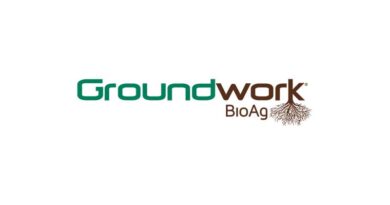
Triple Superphosphate: Fertilizer, Uses, Price, Advantages, Availability
17 November 2025, New Delhi: Triple Superphosphate (TSP), chemically known as calcium dihydrogen phosphate or monocalcium phosphate Ca(H2PO4)2⋅H2OCa(H2PO4)2⋅H2O, remains an important phosphorus fertilizer in global agriculture despite a gradual shift toward other high-analysis P sources. Developed in the early 20th century, TSP was among the first concentrated phosphorus fertilizers to gain widespread acceptance due to its high nutrient value and rapid plant availability.
Production Process
TSP is produced by reacting finely ground phosphate rock with phosphoric acid. In non-granular production, both components are combined in a mixer to form a slurry, which is then stored for curing. Granular TSP follows a similar process, but the slurry is sprayed onto small seed particles to form uniform granules suited for mechanical application. The cured product achieves chemical stability over several weeks, with quality influenced by the characteristics of the phosphate rock used.
Agronomic Characteristics
Triple Superphosphate contains approximately 46% P₂O₅, making it the highest-phosphorus dry fertilizer that does not supply nitrogen. More than 90% of its phosphorus content is water soluble, ensuring quick dissolution in moist soil and efficient uptake by plant roots. As the granules dissolve, they create a mildly acidic micro-environment that enhances nutrient availability, especially in neutral to alkaline soils.
The product also supplies around 15% calcium, contributing to root strength and overall plant structure.
Field Applications
TSP is widely used in fertilizer blends for broadacre broadcasting and in band placement below the soil surface. Its nitrogen-free composition makes it particularly suitable for leguminous crops, which derive their nitrogen requirements from biological fixation. The fertilizer continues to be valued in regions where soil phosphorus deficiency is acute and where targeted P supplementation is required.
Shift in Usage Trends
Industry data indicate a decline in TSP consumption over recent decades. This shift is largely driven by the increasing use of ammonium phosphates such as monoammonium phosphate (MAP), which offer both nitrogen and phosphorus in a single product. Their combined nutrient value and comparatively lower production cost have positioned them as economically attractive alternatives.
Nevertheless, TSP continues to hold relevance in specific agronomic situations and remains an integral part of several regional fertilizer programs.
Environmental and Management Considerations
Phosphorus management remains a critical component of sustainable agriculture. Improper application of any P fertilizer, including TSP, can contribute to surface runoff and nutrient loading in water bodies, leading to accelerated algal growth. Experts emphasize the need to follow soil-test–based recommendations, adopt appropriate placement techniques, and implement conservation practices to minimize environmental impact.
Non-Agricultural Uses
Beyond agriculture, monocalcium phosphate—the active ingredient in TSP—is widely used in the food and feed industries. It serves as an acid component in baking powders and as a mineral supplement providing phosphorus and calcium in livestock and poultry diets.
Also Read: PM Modi to Release 21st PM-KISAN Instalment on November 19
📢 If You’re in Agriculture, Make Sure the Right People Hear Your Story.
From product launches to strategic announcements, Global Agriculture offers unmatched visibility across international agri-business markets. Connect with us at pr@global-agriculture.com to explore editorial and advertising opportunities that reach the right audience, worldwide.






